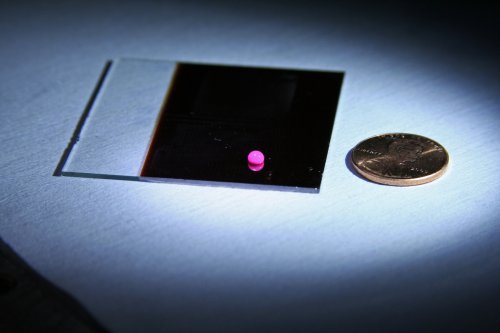 |
|
This image shows a new “hybrid optoelectric” device, developed by researchers at Purdue. The device uses a combination of light and electric fields to position droplets and tiny particles, such as bacteria, viruses, and DNA, representing a potential new tool for medical diagnostics and crime-scene testing. (Craig Snoeyink/Purdue University Birck Nanotechnology Center) |
Researchers at Purdue University have developed a potential new tool for medical diagnostics, testing food and water for contamination, and crime-scene forensics.
The technique uses a combination of light and electric fields to position droplets and tiny particles such as bacteria, viruses, and DNA, which are contained inside the drops.
Other methods using either light or electric fields separately are able to position droplets or the particles they contain, but the new “hybrid optoelectronic” device is able to do both, making it potentially practical for sensors and industrial processes, according to mechanical engineering doctoral student Aloke Kumar.
…
Add new comment